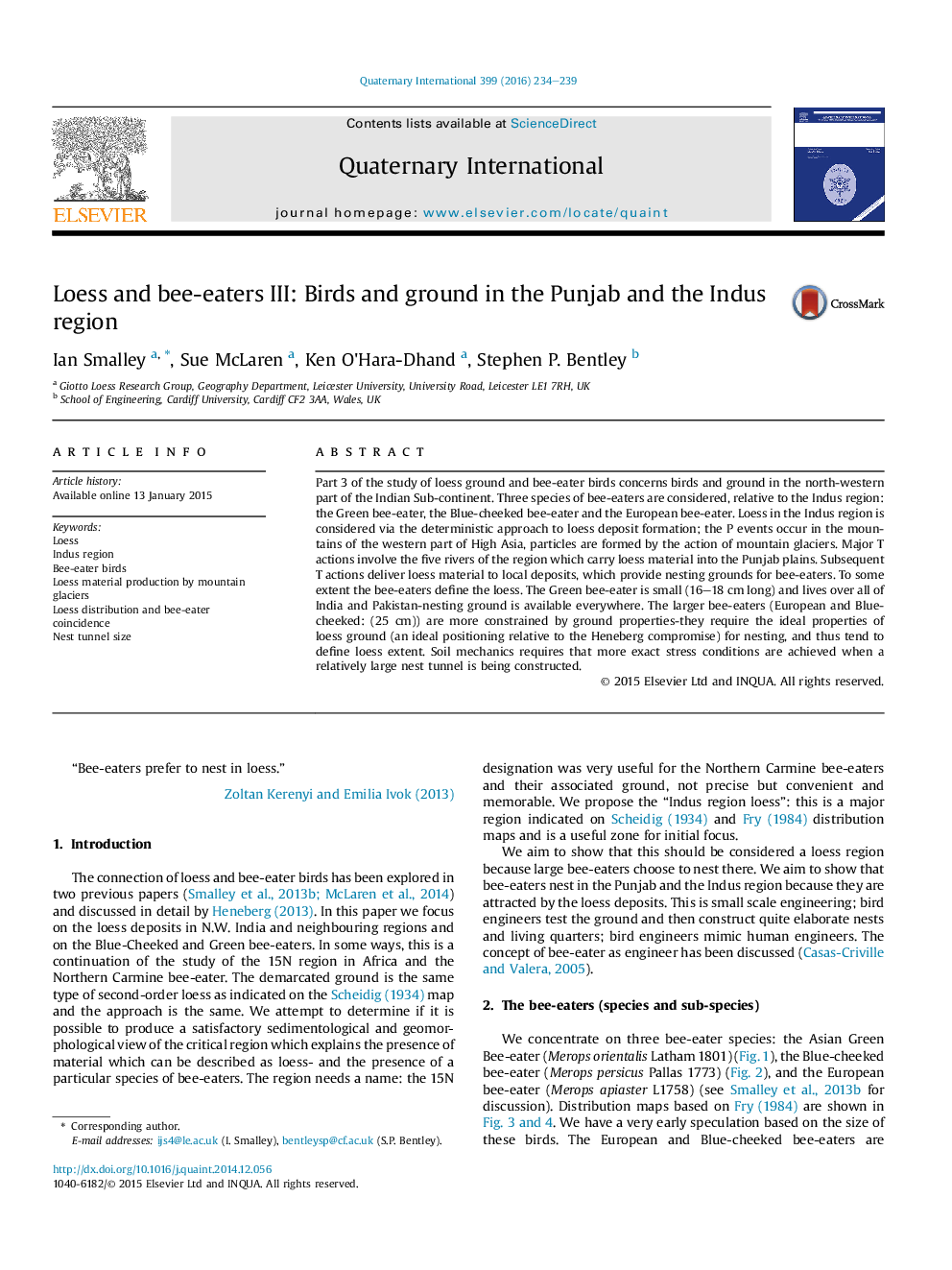| کد مقاله | کد نشریه | سال انتشار | مقاله انگلیسی | نسخه تمام متن |
|---|---|---|---|---|
| 1040273 | 1484099 | 2016 | 6 صفحه PDF | دانلود رایگان |
Part 3 of the study of loess ground and bee-eater birds concerns birds and ground in the north-western part of the Indian Sub-continent. Three species of bee-eaters are considered, relative to the Indus region: the Green bee-eater, the Blue-cheeked bee-eater and the European bee-eater. Loess in the Indus region is considered via the deterministic approach to loess deposit formation; the P events occur in the mountains of the western part of High Asia, particles are formed by the action of mountain glaciers. Major T actions involve the five rivers of the region which carry loess material into the Punjab plains. Subsequent T actions deliver loess material to local deposits, which provide nesting grounds for bee-eaters. To some extent the bee-eaters define the loess. The Green bee-eater is small (16–18 cm long) and lives over all of India and Pakistan-nesting ground is available everywhere. The larger bee-eaters (European and Blue-cheeked: (25 cm)) are more constrained by ground properties-they require the ideal properties of loess ground (an ideal positioning relative to the Heneberg compromise) for nesting, and thus tend to define loess extent. Soil mechanics requires that more exact stress conditions are achieved when a relatively large nest tunnel is being constructed.
Journal: Quaternary International - Volume 399, 18 April 2016, Pages 234–239
